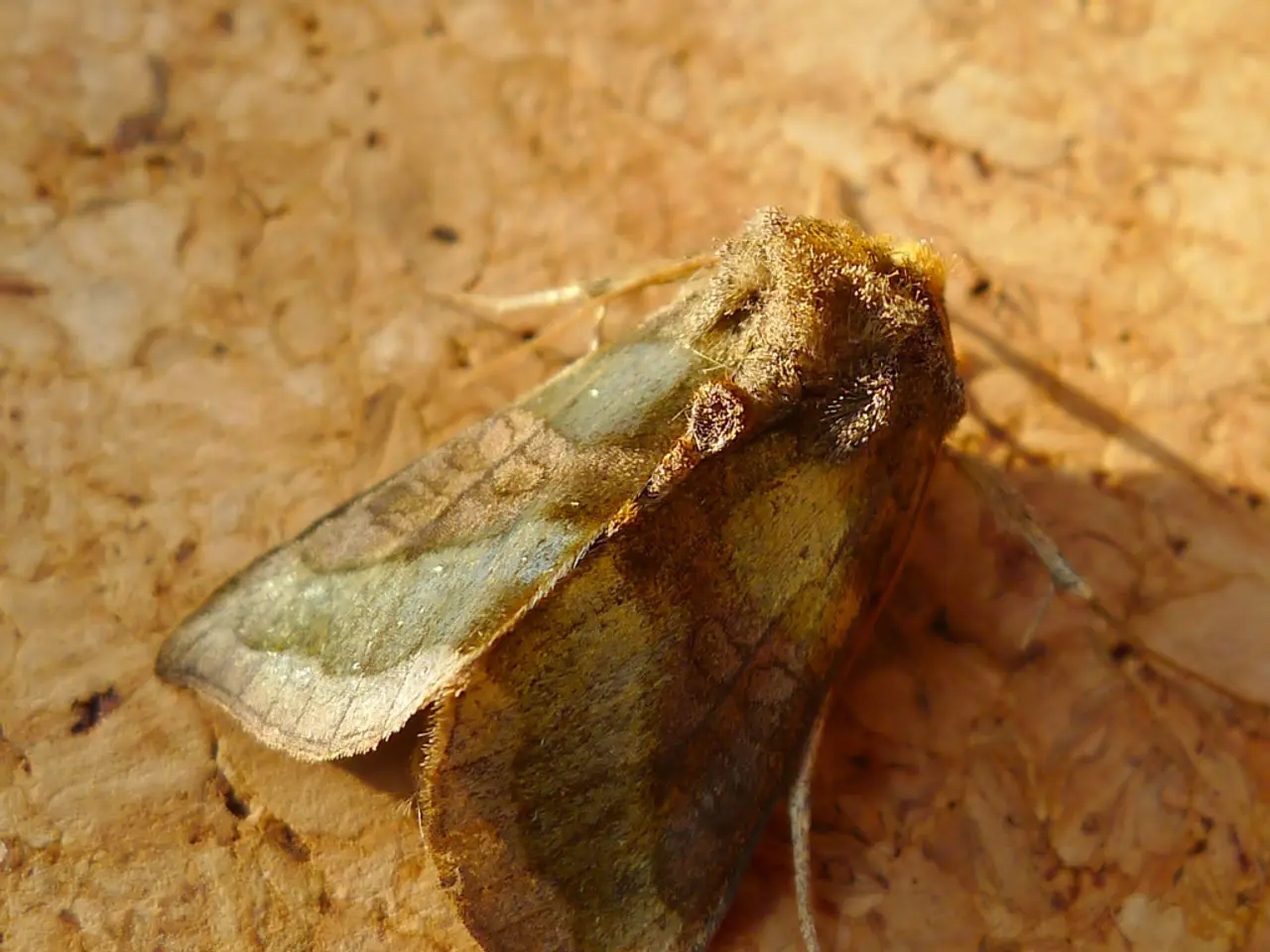Identifying, Preventing, and Eradicating the Spongy Moth: A Guide on Dealing with this Harmful Insect
The spongy moth, scientifically known as Lymantria dispar, is a notorious insect that can cause significant damage to tree health. Here's a closer look at its appearance, life cycle, and prevention methods.
Appearance and Life Cycle
Egg masses of the spongy moth are oval clusters, about 19 mm wide and 38 mm long, with a buff yellow-brown colour and a spongy texture. They may contain 100 to 1000 eggs. The larvae, or caterpillars, have hairy dark brown bodies with distinctive blue and red spots along their backs. Adult moths emerge in July-August, with females being flightless and typically reddish, while males have darker brown colouration with pale stripes on the wings.
The spongy moth undergoes four development stages: egg, larva, pupa, and adult. The caterpillars feed on over 300 tree species, causing substantial damage to the plants.
Prevention and Control
Preventing and controlling spongy moth infestations involves several strategies.
- Removing egg masses from trees, rocks, vehicles, and other surfaces can help prevent hatching. Scrape them off and dispose of them properly.
- Keeping yards clean by removing debris, stumps, and unused items can reduce the number of potential egg-laying sites.
- Regular inspections of your car and house are essential, as these insects lay eggs on various flat, sheltered surfaces.
- Planting resistant trees such as ash, locust, dogwood, sycamore, balsam fir, and mountain laurels can deter spongy moths, as they prefer hardwood species like oak.
- Encouraging natural predators like the black-capped chickadee and other birds that feed on egg masses and larvae can help in controlling the population.
In addition, there are several sprays on the market listed for use against spongy moths, such as Bacillus thuringiensis and horticultural oil. An injectable product that goes directly into the trunk base of the tree is also available.
It's important to note that manual removal of adult spongy moths and larvae should be done while wearing gloves, as contact can cause an allergic reaction.
Egg Control Methods
If the egg casing is in an area that can safely be scraped off, soaking it in soapy water for 2 days can kill the developing insects. Horticultural oil labeled for use against spongy moths can also be used to remove the egg casings.
Removing spongy moth egg casings can reduce the next year's population by around 600. The egg casings can be found on tree bark, buildings, fences, and other outside surfaces from mid-October through April.
Spongy moth eggs appear in August and will overwinter. Young spongy moth caterpillars can be killed by spraying Bacillus thuringiensis.
Spongy moths can be invasive and cause significant damage to tree health by defoliating the plant. By understanding their life cycle and implementing effective control methods, we can help protect our trees and maintain a healthy environment.
Incorporating the given words into the provided text, here are two sentences:
- Adopting a home-and-garden lifestyle that includes regular inspections of your yard, car, and house can help prevent and control spongy moth infestations, as these insects lay eggs on various flat, sheltered surfaces.
- To maintain a beautiful home-and-garden, consider planting resistant trees such as ash, locust, dogwood, sycamore, balsam fir, and mountain laurels, as they can deter spongy moths, which prefer hardwood species like oak.



